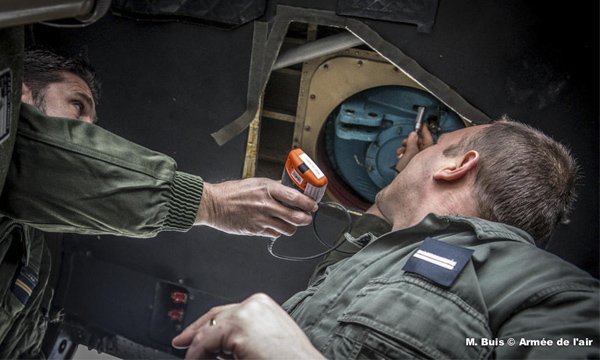The Agence d'innovation de la Défense is looking into non-destructive testing |
| Helen Chachaty |
|
|
04 JUL 2019 | 325 words
|
 |
© M. Buis/Armée de l'air |
|
|
|
The Agence d'innovation de la Défense (AID) recently launched a call for projects in the aviation MOC sector. It targets: "the improvement in non-destructive testing techniques for aircraft", via total or partial automation of certain tasks, in order to reduce maintenance time and the number of dedicated personnel for preventive or post-incident inspection operations. Lasting twelve months, the call for projects will have a 400 000 Euro budget intended to finance "one or more interesting research and development projects". The call for projects comes after the aviation MOC transformation plan was launched by the French Armed Forces Minister in December 2017, with the overall objective of raising fleet availability rates.
The AID, in partnership with the DMAé and the French air force, has identified four areas which have "automation possibilities with equivalent or higher quality control": cell ageing study, searching for cracks in constrained environments and composite and flatness checks. Among the fleets which could benefit from innovative solutions are the Rafale, the Mirage 2000, the Alphajet and the A400M. As for flatness checks, these could apply to "any aircraft" in service.
The faults searched for extend from delaminating/peeling off to sealing faults, coating deformations and impact detection. The techniques which are currently used include endoscopy (crack search), ultrasound and non-destructive testing (airframe ageing and composite check) or impressions and 3D scanning (flatness check).
The timetable schedules the award of contracts in December 2019 and the demonstration phase should be starting eleven months later, in November 2020. The proposals, which are expected by 30th August at the latest, must contain a system which includes one or more sensors, along with the associated data processing, from new technologies or "adaptations" of solutions which are already in effect in other, non-aviation markets. The AID specifies that the project shall reach a TRL 6 level of maturity compatible with deployment in theatres of operation, therefore simple and easy to implement.
|
|
| |
| |
They made this section possible |
|
|
|
|
|
|
|
|
|
|
|
|
|
|
|
|
Top stories |
|
|
|
|
|
Top stories
|